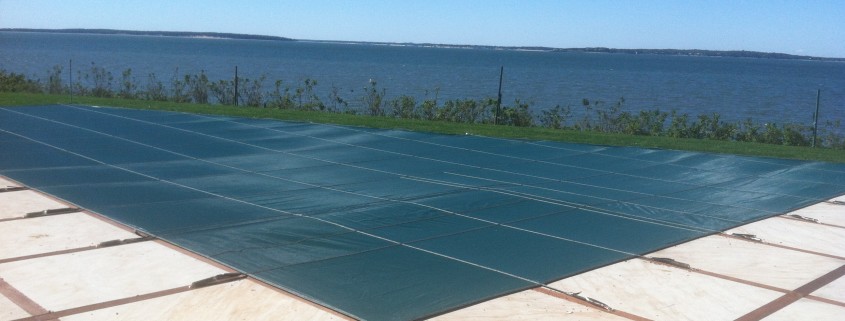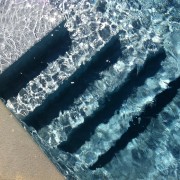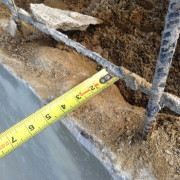Pool maintenance during the Winter?
Believe it or not, pool maintenance during the off season months is very important to the longevity of your swimming pool!
Patrick Kenney and Southampton pool maintenance
A few simple techniques during the off season can keep your pool in great physical condition with crystal clear water ready to be opened come Spring time.
The most important thing that must be addressed during the Winter is the water level within the winterized swimming pool. Water within a winterized swimming pool should be maintained 14″ below the top of the pool. On average, Long Island gets 28.3 inches of precipitation during the typical months that a swimming pool is closed and winterized. This means that most pools, if untreated over the Winter will overflow. The typical place where water will overflow, would be at the back of the skimmers. This is a bad situation for many reasons. The overflowing water is running down alongside the backside of the swimming pool walls. Depending on the type of pool wall structure this can corrode and weaken the walls of the swimming pool. This traveling water can cause decks to rot and patios to sink around the pool.
Here in the Northeast ice is a killer for swimming pools. In a swimming pool that has a high water level when ice forms, the following are among the potential problems:
- Cracked, weakened, or popped off pool tiles
- Cracked pool light conduits -water inside the pipe was near ground surface and froze and expanded
- Cracked plastic skimmers
- Corners of vinyl liners popping out of the extrusion from ice expansion
- Corners of vinyl liners cracking on older brittle liners
A safety cover is no longer considered “Safe” according to Loop Loc and the APSP (Association of Pool and Spa Professionals) when the water within the pool is not maintained 14″ below the pool surface. A child or animal may wander on to the safety cover. When the water is too high, the individual on top of the cover will sink down well into the water, at a time when it is difficult to get off of the cover because it is sinking in. This can create a drowning hazard, potentially more dangerous than had the pool not been covered at all.
Another problem with water that is too high within a winterized swimming pool is the safety cover sagging down into the pool water. Not only is this shortening the life of your expensive safety cover but it is also allowing leaves and debris to sit on top of the water, or the sun to beat on the water, and start to grow algae and bacteria causing nitrogen buildup within the pool water. This nitrogen buildup ruins your water quality for the next season and for years to come since nitrogen is not removed with normal pool chemicals and filters. This will have a snowballing effect, causing the need for higher chlorine levels to keep algae at bay, which will then shorten the life of all pool surfaces including plumbing, marbeldust finishes, liners, tile grout, and pool heaters, pumps, saltwater sanitizers, and filters.
The moral of this story is it is important to pump the pool water down at least one time during the off season.
At Patrick’s Pools, we do our off season Winter services in 2 parts. First we pump water out of the pool to make sure our water level is 14″ below the surface of the pool before the deep freeze occurs and ice starts to form. Second, starting in late March, we reinstall all pool equipment, test firing the entire system to make sure everything is operating as it should. We also make sure the cover is tightened and free of all leaves and debris. We even clean leaves from the pool area that could potentially blow onto the cover. At this time we also add a small amount of chemicals to the pool water so that the water is crystal clear when we open it in a month or two. A small dose goes a long way when the water temps are low. What this does is it allows us to skip the step of the extra large chlorine “shock” during the pool opening. This step has many benefits. It keeps our customer’s bills lower and it keeps their pools looking newer for longer since the pool is not being exposed to an extra large dose of chlorine at any one time. It also starts the pool off on a great step right from the start of the season. No algae or bacteria has grown in the pool and the pool will quickly be crystal clear, clean, beautiful, and ready to swim in.
Written by Patrick Kenney
Owner of Patricks Pools Inc and member of APSP, NESPA, LIPSA and is an APSP certified building professional of swimming pools.
By Patricks Pools
Sales@patrickspools.com



